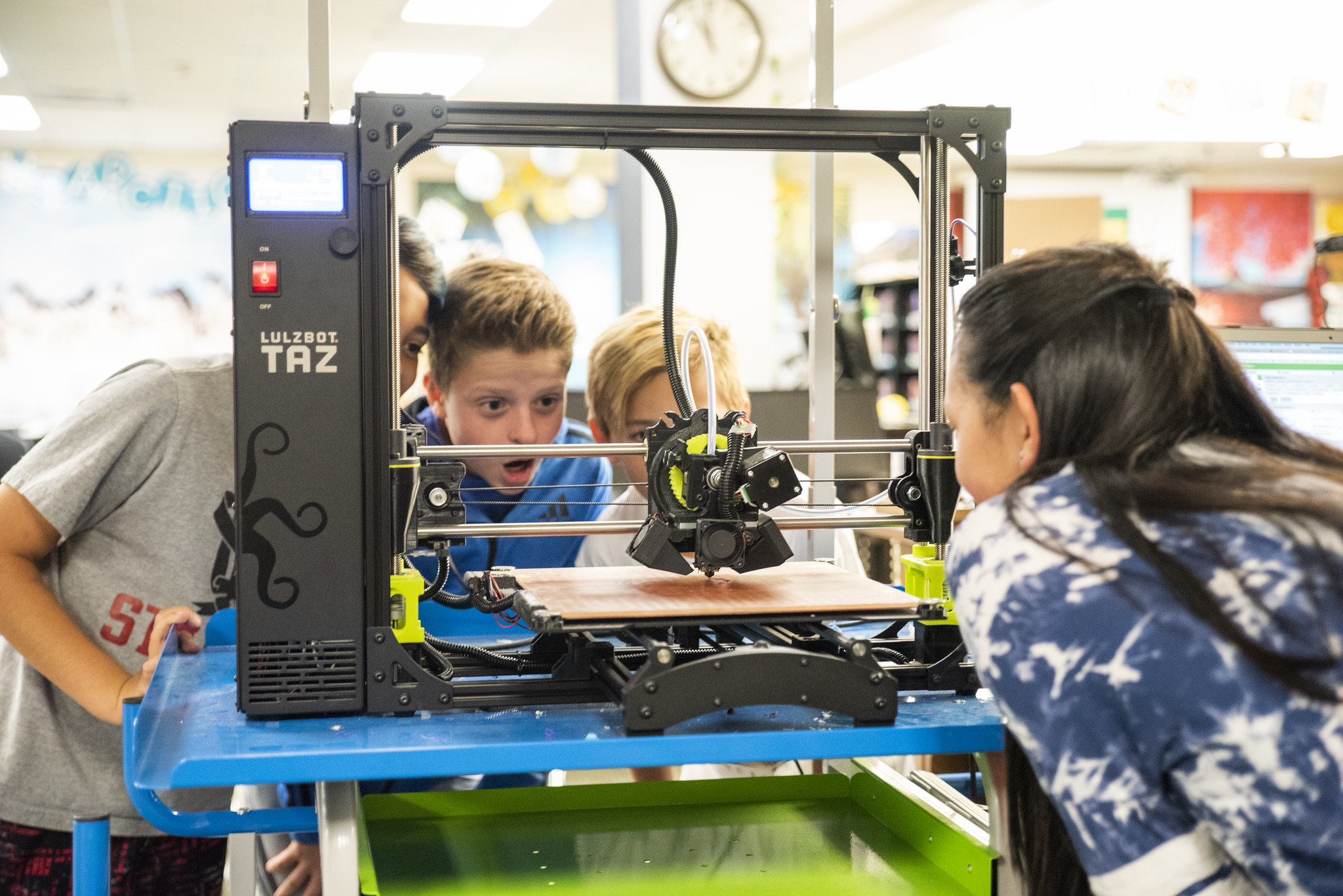According to a survey of 1,500 chief executives conducted by IBM’s Institute for Business Value, CEOs list “creativity” as the most important leadership skill needed for successful ventures in the future. Business leaders understand the power of the innovative individual who is a creative thinker and collaborator. Steve Jobs once said, “Innovation distinguishes between a leader and a follower.” We are preparing our Sunset Spartans to be the next generation of leaders.
To do this we have formed solid partnerships with leaders in the field of creative education nationally, statewide, and locally. We became a John F. Kennedy Center for the Performing Arts Partner in Education and each of our teachers are versed in the Kennedy Center philosophy of Arts in Education:
- Arts as Curriculum, sometimes called IN the Arts Learning
- Arts-Enhanced Curriculum, sometimes called THROUGH the Arts Learning
- Arts-Integrated Curriculum where students meet dual learning objectives while engaging in the creative process to explore logical connections between an art form and another subject area gaining greater understanding in both.
The three variations naturally link and support each other. More information concerning the distinctions can be found at http://artsedge.kennedy-center.org/families/at-school.aspx.
Current brain research (www.dana.org) confirms that rich context and multisensory instruction make even simple facts easier to learn and remember, not to mention complicated ideas, facts, and theories. When teaching invention and creativity, problem solving, and collaboration, one can’t expect to succeed solely with multiple choice quizzes. The arts are more essential than ever in education.
With the vast social, cultural, technological, and economic changes our nation is experiencing, as well as those we have yet to imagine, many are reconsidering what knowledge and skills students need to be successful in the 21st century. The question under consideration is how to create a learning environment consistent with the cognitive and expressive demands of the 21st century.
Using the arts to enhance learning affords students the means to make their thinking visible and to demonstrate learning in inventive and original ways that does not restrict or limit our most impressive thinkers to rote black and white answers on paper. Integrating the arts with other content, technology and design, provides a way for our leading learners to use 21st century skills in a truly authentic way – to not be just a solver of prefab problems, but an innovator of what we have yet to discover, a canvas yet to be painted, a composition yet to be performed, a leader ready to lead.



